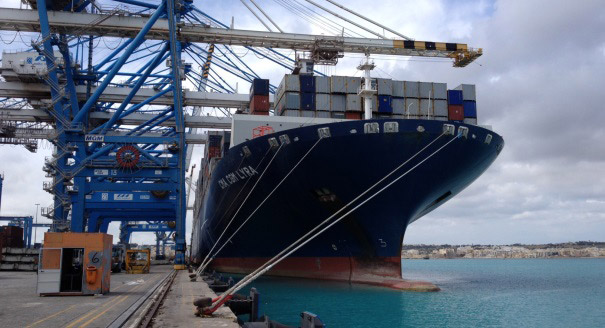Having recently traveled from China to France on a giant container ship, I came to realize how globalization and conflicts affect us on a daily basis. I brought back four distinct impressions: on China, trade flows, piracy, and irregular migration.
It’s now trivial to say that China is the world’s factory. The country’s coastal regions are buzzing with activity and choking with industrial pollution. Their cities have long been transformed into vast production centers, and they are now being modernized with giant transport networks and twenty-first-century habitats.
For example, Shenzhen, a city next door to the special administrative region of Hong Kong, offers an amazing landscape of dozens of 30-story apartment towers packed together on the shoreline, literally yards from one another. The city boasts a leisure center complete with several amusement parks, a grounded ocean liner converted into a hotel, and countless fast food outlets.
Sea trade is a major source of income for Shenzen. The city’s container port—or rather, its many ports, which are by no means China’s biggest—dwarfs its counterparts in Barcelona, Malta, Valencia, or Marseille. Day and night, the harbor is buzzing with giant cranes, mammoth ships, feeder barges, and semitrailer trucks. The world’s factory is right under your eyes, and the transformation of sea trade in the last twenty years serves it well.
The ship I traveled on (pictured), one of the biggest in the world, sailed from Shenzhen with no less than 10,000 20-foot containers (capacity is measured in 20-foot equivalents, even if many containers are 40 or 45 feet long), with a total payload of around 140,000 tons. If one estimates that on a daily basis, some 100 such ships travel to and from China—and this is a very conservative estimate—then 140 million tons of merchandise are exchanged between Europe and the Far East every single day. That makes for a long procession on the high seas.
My ship was built in 2010 in South Korea, and the next generation of vessels is now being constructed in China. China is fast upgrading its industrial skills.
For a while, modern sea trade also provided a living for daring Somali pirates, modern-day bounty hunters equipped with satellite phones and sophisticated radars and connected to ships’ information systems. Thanks to a massive Western military operation in the Gulf of Aden, implemented with precision navigation techniques, and the establishment of a navy-patrolled Internationally Recommended Transit Corridor leading to the strait of Bab-el-Mandeb, there has been a sharp drop in piracy activities since 2012.
But the cost of the operation to Western navies is high, and the sustainability of the mission’s benefits is under review. For how long will the West be able to maintain such costs?
Another plague of modern times is found in the activities of human traffickers across the Mediterranean. That is nothing new: for more than a decade, well-equipped networks have been recruiting migrant candidates across West Africa and beyond. The political tragedies in Somalia, Sudan, and Syria have only added to the steady supply of exploitable migrants, sometimes used as workers, sometimes just sitting in refugee camps.
For a long time, boats sailing from Libya had a single target, the Italian island of Lampedusa. That was a prime choice, since traffickers knew that irregular migrants landing there would be promptly transferred to the Italian mainland.
More recently, Malta has also become a target, and the tiny island is now packed with irregular migrants who have nowhere to go—no “mainland” and no “country of origin” that they would be willing to declare their own. The strain on the Maltese economy is highly visible, especially in the south of the island. This is now an EU issue, but given Africa’s many tragedies, no end is in sight.






